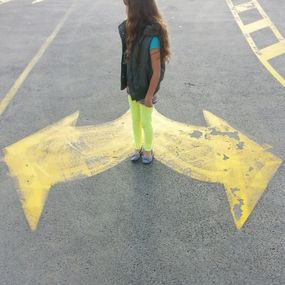
Want to beat the lines during your next theme park outing? When you enter the theme park, turn left.
It's incredibly simple advice, but experts say you'll avoid the longest lines because most people tend to instinctively veer to the right upon entering. If you go left, you'll be going against the grain, and against the intent of the amusement park designers. But in general, which direction do most people walk in, clockwise (starting right) or counterclockwise (starting left)?
Advertisement
It's an intriguing question, especially since it's common practice for runners to move counterclockwise on athletic tracks. The same counterclockwise action goes for horse and car races, and for baseball players running the bases. There is even evidence that the chariot races at ancient Rome's Circus Maximus ran counterclockwise, too.



